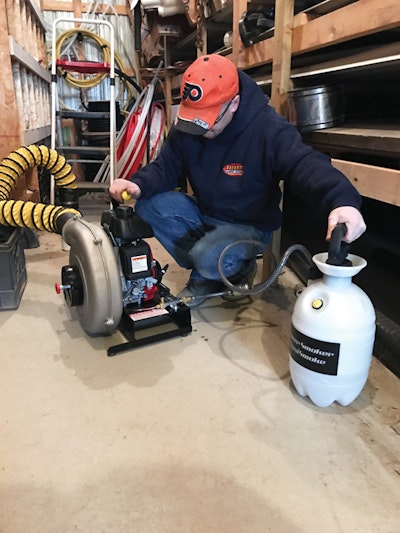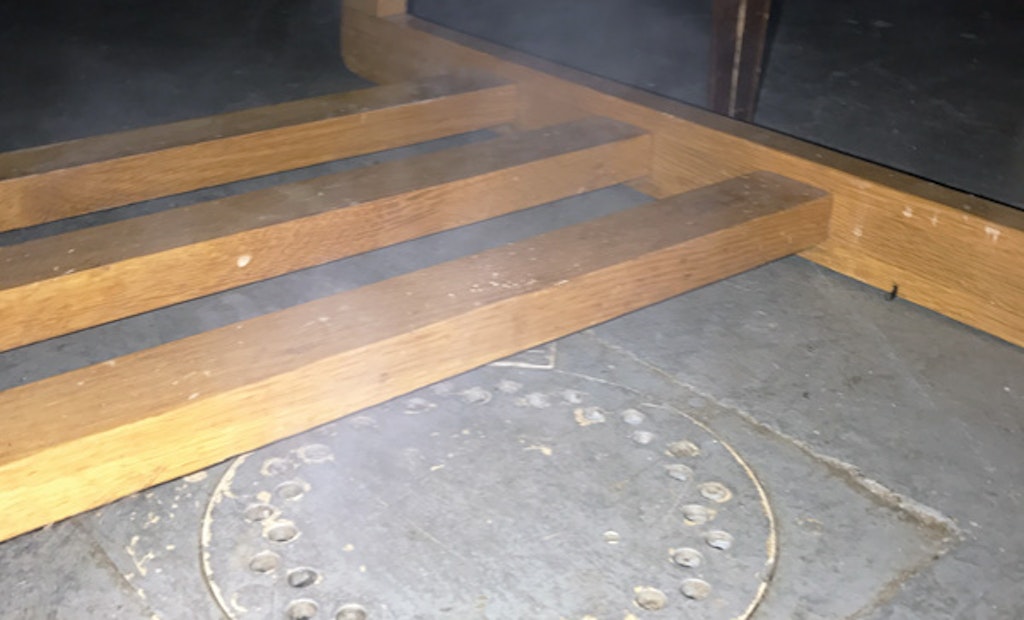Interested in Location/Detection?
Get Location/Detection articles, news and videos right in your inbox! Sign up now.
Location/Detection + Get AlertsWhere there’s smoke, there’s not always fire. Sometimes there’s a plumbing leak instead, as Jeffrey Tillett Jr. can readily attest whenever he uses a Power Smoker 2 to track down the source of sewer odors.
Tillett — who co-owns Tillett Plumbing & Heating in Palmyra, Pennsylvania, along with his mother, Betty — has been using the smoke machine for a couple years to help pinpoint the location of miniscule leaks. When customers report mysterious odors and Tillett checks the usual suspects to no avail, he fires up the Power Smoker, made by Hurco Industries.
“First I check things like toilet flange seals and trap seals — anything that might be the cause of the odor,” he explains. “If there’s nothing apparent, the smoker is my next step.”
The Power Smoker essentially consists of four components: A 2 1/2 hp, four-stroke Honda gasoline engine; a 6-foot-long 4-inch-diameter, heavy-duty piece of flexible duct; a high-pressure, cast aluminum fan that disperses the smoke at up to 700 cfm; and a canister filled with LiquiSmoke, a laboratory-tested, nontoxic and nonstaining fluid that produces the smoke.
The fan can be adjusted to a cfm level that best suits the size of the system being tested. The unit measures 14 1/2 inches long, 15 inches wide and 20 inches tall. It weighs 47 pounds (not including the canister) and features a built-in handle for easy portability.
A typical smoke test takes about 15 to 20 minutes and setting up the machine doesn’t take very long, Tillett says. First, securely fasten the open end of the duct to any clean-out or building trap vent riser. “A building trap vent riser is usually a good access point because the trap prevents the smoke from traveling through a city sewer main,” Tillett says. Then attach the hose from the canister to the power pack using a quick-connect valve.
After that, start the unit and let it warm up. Then pressurize the canister by pumping the built-in handle a few times. After that, open the valve to inject the LiquiSmoke into the unit’s muffler. When the muffler is hot enough, it turns the liquid into smoke. Last step: Start looking for telltale smoke that indicates where the leak is located. “When you see smoke coming from vent pipes above the roof, you know the system is full of smoke and it’s time to start looking around inside,” he says.
“In most cases, the draft is quite strong, so you don’t always have to cap off a system,” Tillett explains. “But if we run a test and still don’t see anything, we can partially plug a roof vent to pressurize the system. In most cases, though, we’re not trying to create pressure. If you pressurize the system, you can force the smoke through traps, so it looks like there’s a leak where there isn’t a leak.”
Why not just use a pipeline inspection camera? While Tillett has nothing against televising lines, he says it’s not always the most efficient or effective approach. First of all, inspection cameras don’t reveal everything because tuberculation and other things can mask hairline cracks. “There’s a lot going on inside pipes,” Tillett says. And when working in larger buildings, it’s faster and more cost-effective to use a smoke machine than to inspect all the lines, he adds.
Tillett Plumbing, which serves central Pennsylvania around the cities of Hershey and Harrisburg, used to rely on smoke candles. But Tillett says the candles aren’t as dependable. As such, when he saw a Power Smoker at the annual Water & Wastewater Equipment, Treatment & Transport Show, he figured it was worth the roughly $2,000 investment.
“The setup time (for the smoke machine) is about the same as with candles,” Tillett explains. “But if you can’t get a candle to light, that adds time. Once I bought two or three candles … I lit the first candle and there was no smoke — nothing. I actually went through all three candles, then had to waste even more time running back to a store to get more candles. Here all you have to do is make sure you have gas in the engine and liquid smoke and you’re good to go.”
Tillett says he’s seen the Power Smoker succeed where other efforts have failed. In one instance, a homeowner troubled by an intermittent, very strong sewer odor in his basement had already called in two plumbers, to no avail. After a walk-through revealed no apparent odor source, Tillett revved up the smoke machine. “Within 10 minutes, we found major smoke in a hallway in the basement,” he recalls.
“At that point, we traced it back and saw smoke coming from some insulation in an unfinished area of the basement,” Tillett continues. “We found a 1 1/2-inch drainline that a contractor had failed to cap off during a remodeling project. The homeowners were very surprised — and very grateful because the line was still connected to the sewer.”
“It’s a very ingenious machine,” Tillett concludes. “It’s extremely valuable for specific applications.”







